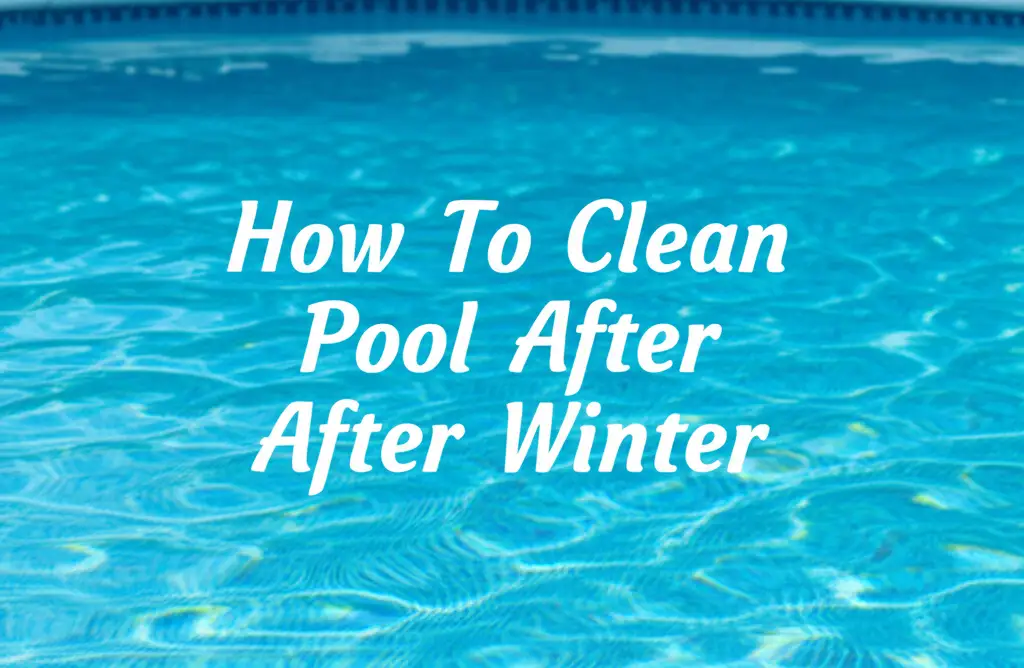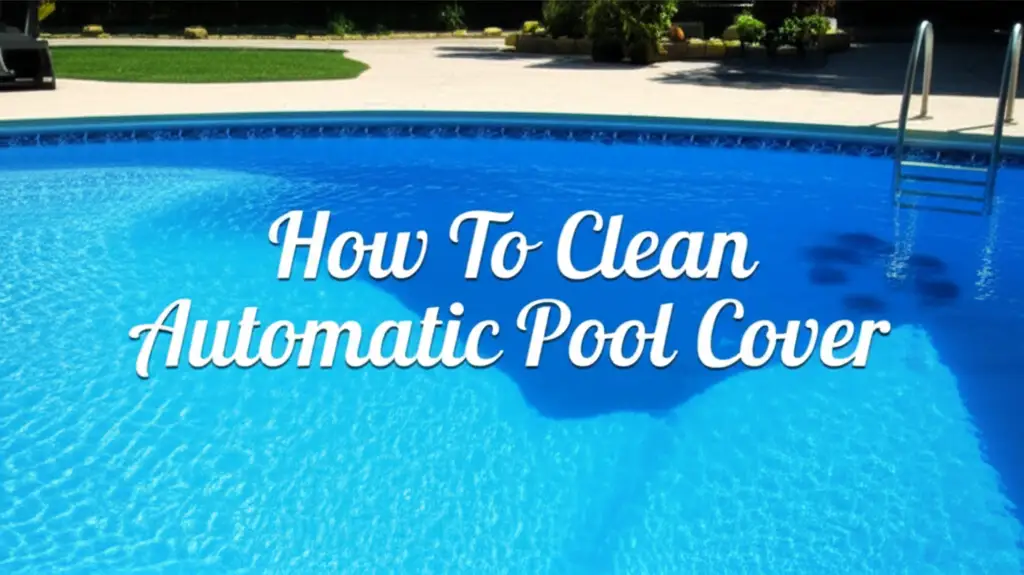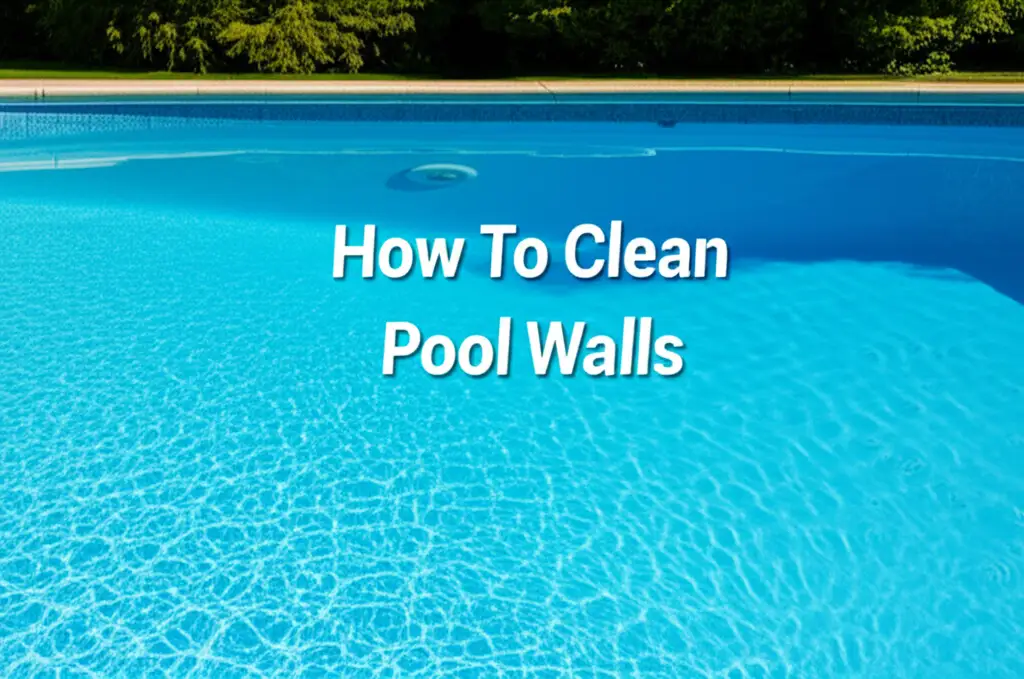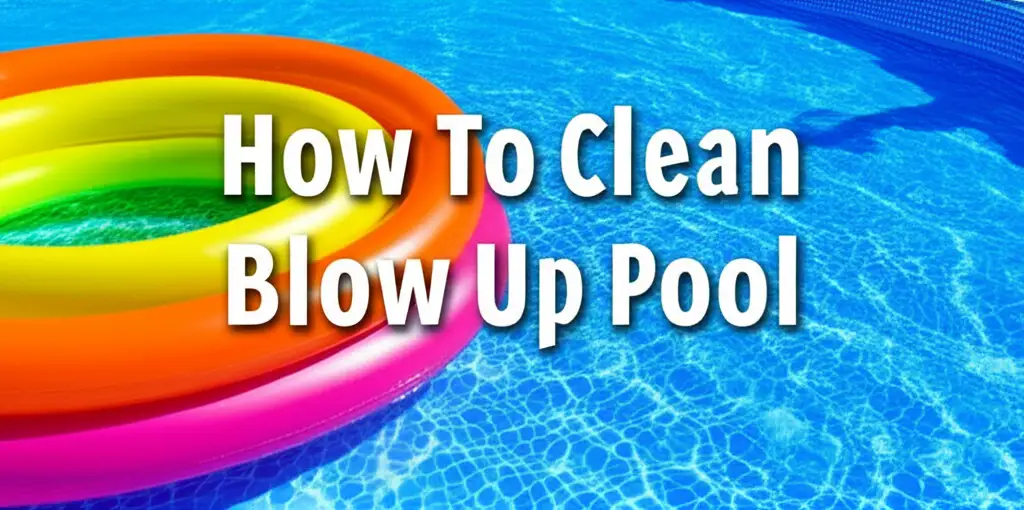· Pool Maintenance · 17 min read
How To Clean Pool Cartridge Filter
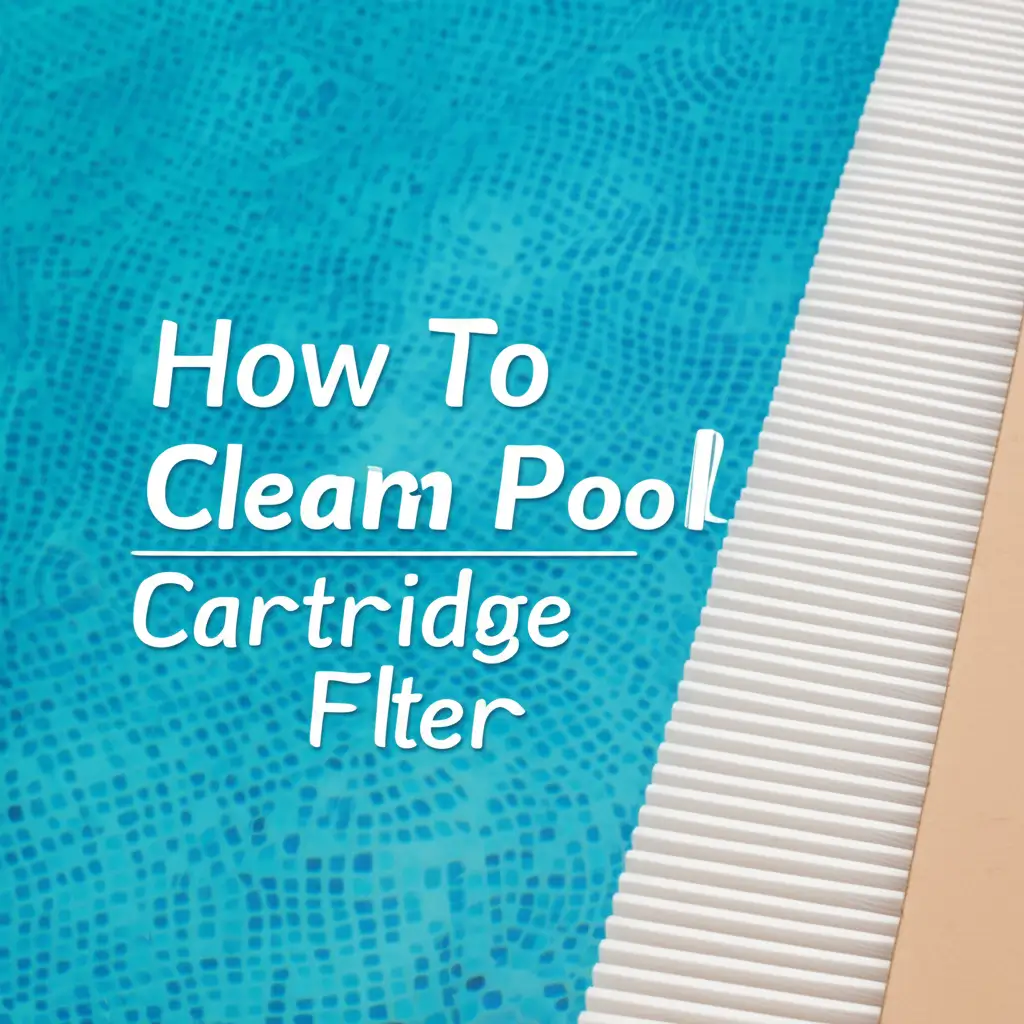
Clean Pool Cartridge Filter for Sparkling Water
Maintaining a swimming pool takes effort. A clean filter is key to clear water. If your pool water looks cloudy, your filter likely needs attention. Knowing how to clean pool cartridge filter elements yourself saves money. This guide covers everything you need.
You will learn the correct tools to use, step-by-step cleaning instructions, and how often to perform maintenance. Keep reading to ensure your pool remains a sparkling oasis for family and friends. We will explore simple methods for a crystal-clear swimming experience.
Takeaway:
- Regularly clean your pool cartridge filter to ensure clear water.
- Always turn off the pump and release air pressure before starting.
- Use a garden hose with a strong nozzle for initial cleaning.
- Consider a chemical soak for deep cleaning and stubborn buildup.
- Know when to clean and when to replace your filter cartridge.
To clean a pool cartridge filter, first turn off the pool pump and release air pressure from the filter tank. Remove the dirty cartridge, then rinse it thoroughly with a garden hose to dislodge debris. For deep cleaning, soak the cartridge in a specialized filter cleaner solution, then rinse again before reinserting it into the filter tank.
Why Your Pool Cartridge Filter Needs Regular Cleaning
Your pool filter is the heart of your pool’s circulation system. It captures debris, dirt, and microscopic particles. This keeps your water clean and safe for swimming. A cartridge filter works by trapping these unwanted elements in its pleated fabric. Over time, these pleats become clogged.
When the filter clogs, water flow decreases. This makes your pump work harder. A strained pump uses more energy and can wear out faster. Dirty filters also cannot remove impurities effectively. This leads to cloudy water, algae growth, and imbalanced chemicals. I always tell pool owners that a clean filter ensures healthy water. It also protects your expensive pool equipment.
Regular cleaning extends the life of your filter cartridge. It keeps your pool water pristine. Think of it like changing the oil in your car. It is a necessary routine for peak performance. Skipping this vital step leads to more problems and higher costs down the road. Maintaining your filter means enjoying your pool more often. It helps you avoid costly repairs.
A well-maintained filter system also helps balance your pool chemistry. When the filter is dirty, it cannot circulate chemicals properly. This makes your sanitizers less effective. You might find yourself adding more chlorine than necessary. This wastes money and can irritate swimmers’ skin and eyes. Therefore, cleaning your pool cartridge filter is essential for water clarity, equipment longevity, and chemical efficiency.
Gathering Your Tools: What You Need to Clean Your Cartridge Filter
Before you start cleaning, gather all necessary tools. Having everything ready saves time and effort. You want to make the process smooth and efficient. I always lay out my supplies beforehand. This ensures I do not miss a step.
First, you need a reliable water source. A garden hose with a powerful spray nozzle is a must. A strong stream helps dislodge stubborn dirt. Some people use a specialized filter cleaning tool. This tool attaches to your hose and has unique comb-like jets. They help clean deep within the pleats. This can make the job much easier.
Next, consider your cleaning solutions. For basic rinsing, water is enough. For a deeper clean, you will need a filter degreaser or chemical cleaner. These solutions break down oils, lotions, and calcification. There are various brands available. Choose one specifically designed for pool cartridge filters. You can also use a mixture of muriatic acid and water for stubborn calcium, but be very careful with this. Learn more about how to clean pool tile with muriatic acid if you choose this strong chemical.
You will also need a large bucket or a dedicated container. This is for soaking the filter. Make sure it is big enough to fully submerge your cartridge. Protective gear is also important. Wear rubber gloves and safety glasses. Filter cleaning chemicals can be harsh on skin and eyes. My personal experience taught me never to skip safety gear. A good stiff brush, not a wire brush, can also help dislodge debris. Ensure it is soft enough not to damage the filter material.
Finally, have a clean cloth or towel ready. You will use this to wipe down the filter housing. A small screwdriver or wrench might be useful. You may need it to open the filter tank clamps. Having the right tools makes the entire cleaning process simpler.
Step-by-Step Guide: How To Clean Pool Cartridge Filter Effectively
Cleaning your pool cartridge filter is a straightforward process. Follow these steps for the best results. I break it down for you so it is easy to understand. Performing these steps correctly ensures a thorough clean.
Step 1: Turn Off the Pool Pump and Release Pressure
Safety comes first. Always turn off your pool pump before touching the filter. Locate the circuit breaker for your pump and switch it off. This prevents accidental starts. Next, find the air relief valve on top of your filter tank. Open this valve slowly. You will hear a hissing sound as air escapes. The pressure gauge should drop to zero. Once no more air comes out, close the valve. This step is critical for safety. It also helps prevent water from gushing out when you open the tank.
Step 2: Remove the Filter Tank Clamp and Lid
Most cartridge filters have a large clamp that holds the two halves of the tank together. Unfasten this clamp. Some clamps have a nut you need to loosen. Others have a simple lever. Once the clamp is loose, carefully lift the top half of the filter tank. Sometimes it takes a little jiggling. Be gentle to avoid damaging the O-ring seal. If the O-ring sticks, a little silicone lubricant can help.
Step 3: Extract the Cartridge Filter Element
Inside the tank, you will see the large cylindrical filter cartridge. Gently lift it out of the tank. It might be heavy with trapped water and debris. Be prepared for some water to spill. I usually place it on a clean, paved surface or a large bucket. This keeps my area tidy. Inspect the cartridge for any obvious tears or damage. If the filter is badly damaged, it might be time for a replacement.
Step 4: Rinse the Cartridge Thoroughly
This is the main cleaning part. Use your garden hose with a strong spray nozzle. Start from the top of the cartridge. Work your way down each pleat. Hold the nozzle at an angle. This allows the water stream to get deep into the folds. Rinse until no more dirt or debris comes out. Pay special attention to the areas between the pleats. Dirt often gets packed tightly there. I find it helpful to rotate the cartridge as I spray. This ensures I clean all sides. If you have a filter cleaning tool, this is where it shines. It blasts water evenly into each pleat. For other filter types, such as how to clean sand filter for above ground pool, the methods differ significantly.
Step 5: Apply a Chemical Cleaner (If Needed)
For stubborn oils, greases, and calcium buildup, a chemical cleaner is necessary. These cleaners help break down the gunk that rinsing alone cannot remove. Follow the product instructions carefully. Some cleaners are sprays you apply directly. Others require soaking the cartridge in a diluted solution.
If soaking, use a large bucket. Fill it with water and the recommended amount of cleaner. Submerge the entire cartridge. Let it soak for the time specified on the product label. This can range from a few hours to overnight. I often leave mine to soak overnight. This gives the chemicals ample time to work. After soaking, rinse the cartridge again thoroughly. Ensure all chemical residue is gone. For related pool maintenance tips, see our guide on how to clean salt water pool.
Step 6: Inspect and Replace the O-Ring
Before putting everything back, inspect the large O-ring on the filter tank. This rubber ring creates a watertight seal. Check for cracks, tears, or dryness. If it looks damaged, replace it. Apply a small amount of silicone lubricant to the O-ring. This keeps it pliable. It also helps create a better seal. This small step prevents leaks.
Step 7: Reassemble the Filter Tank
Carefully place the cleaned cartridge back into the filter tank. Make sure it sits correctly on the bottom manifold. Then, place the top half of the tank back on. Align the halves properly. Fasten the clamp securely. Make sure the O-ring is seated correctly. This prevents leaks. Hand-tighten the clamp first, then use a wrench if needed. Do not overtighten.
Step 8: Restart the Pool Pump
Once the filter tank is reassembled, open the air relief valve on top. Then, turn your pool pump back on at the circuit breaker. Water will start to fill the filter tank. Air will escape from the relief valve. Once a steady stream of water comes out, close the air relief valve. Check the pressure gauge. Note the clean filter pressure reading. This new reading will be your baseline. You will use it to know when your filter needs cleaning again. Pool owners often ask me about the right pressure for their pool filter. It varies by system, but noting the “clean” pressure is key. This helps you understand when your filter starts getting dirty.
Deep Cleaning Your Cartridge Filter: Chemical Soaks
Basic rinsing with a hose is good for regular maintenance. However, it does not remove everything. Over time, your filter collects stubborn buildup. This includes oils, suntan lotions, algae, and calcium. These elements embed themselves deep in the filter pleats. When this happens, a chemical soak is necessary.
A chemical soak rejuvenates your filter. It breaks down these unseen contaminants. This restores the filter’s efficiency. You can use a specialized filter cleaning solution. Many pool supply stores sell these products. They are formulated to dissolve specific types of grime. Always read the product label for instructions. These often involve diluting the cleaner with water.
To perform a chemical soak, you will need a large, clean plastic container. A 30-gallon trash can works well. Fill the container with water. Add the recommended amount of filter cleaner. Submerge your cartridge filter completely in the solution. Ensure all pleats are underwater. The soaking time varies by product. Some need a few hours. Others require an overnight soak. I find that leaving it overnight often gives the best results.
After the soaking period, remove the cartridge from the solution. Rinse it thoroughly with a garden hose. Make sure no chemical residue remains. You want to see clean water coming off the filter. The pleats should appear much brighter. This deep cleaning process should be done at least once a season. It might be more frequent if your pool gets heavy use. This method dramatically improves your filter’s performance. It also extends its lifespan.
Remember that cleaning chemicals can be strong. Always wear gloves and eye protection. Work in a well-ventilated area. Dispose of the used chemical solution properly. Some can be poured down a drain with plenty of water. Others might need special disposal. Check local regulations. This deep cleaning keeps your pool sparkling. It ensures your filter works at its best.
When to Clean and When to Replace Your Cartridge Filter
Knowing when to clean versus when to replace your cartridge filter is important. Regular cleaning extends filter life. However, filters do not last forever. Recognizing the signs helps you make the right decision. This saves you time and money in the long run.
Your filter pressure gauge is your first indicator. Note the clean pressure reading after a thorough cleaning. When this reading rises 8-10 PSI above that clean pressure, it is time to clean. This means your filter is clogged. The pump works harder to push water through. Regular cleaning based on pressure readings maintains efficiency.
Frequency of cleaning depends on pool usage. Heavy use means more frequent cleaning. Pools with trees nearby collect more debris. Aim to clean your filter every 4-6 weeks during peak season. You might clean it less often in the off-season. I personally clean my pool filter once a month during summer. This keeps my water pristine.
However, sometimes cleaning is not enough. You need to replace the cartridge when it shows signs of wear. Look for tears in the filter fabric. Pleats might become flattened or damaged. The end caps can crack. These issues allow dirt to pass through. This makes your filter ineffective. My rule of thumb is, if the fabric looks worn or has holes, it is time for a new one.
Another sign for replacement is consistently high pressure. Even after a thorough cleaning, the pressure might stay elevated. This means the filter material is permanently clogged. It might have microscopic particles trapped within its fibers. This prevents proper water flow. No amount of cleaning will fix this.
The lifespan of a cartridge filter varies. Quality filters typically last 1-2 years with proper care. Some higher-end models can last 3-5 years. Factors like pool chemistry and bather load affect this. Harsh chemicals or unbalanced water can shorten filter life. Investing in a quality replacement cartridge is wise. It pays off in better filtration and less frustration. Replacing a filter is simpler than deep cleaning sometimes. For related maintenance, you might be interested in knowing how to clean Pentair pool filter specifically.
Common Mistakes to Avoid When Cleaning Pool Filters
Cleaning your pool filter correctly prevents costly damage. Many common mistakes can harm your filter or reduce its effectiveness. Knowing what to avoid is as important as knowing what to do. I have seen these errors firsthand.
One major mistake is using a pressure washer. While a garden hose with a strong nozzle is fine, a true pressure washer is too powerful. It can tear the delicate filter fabric. This creates holes. These holes allow dirt to pass through. This ruins the filter. Always use a regular garden hose. Maintain a safe distance from the pleats.
Another error is using harsh household cleaners. Bleach, dish soap, or laundry detergent are not suitable for filter cleaning. These products can damage the filter material. They can also introduce unwanted chemicals into your pool water. Always use cleaners specifically designed for pool filters. They are formulated to be safe and effective.
Not cleaning the filter regularly is a big mistake. A clogged filter makes your pump work harder. This wastes electricity. It also wears out your pump faster. Many people wait until their water turns cloudy. Clean your filter based on pressure readings. Or clean it on a schedule. This prevents problems before they start. My pool stays clear because I stick to a regular cleaning schedule.
Over-tightening the filter tank clamp is another common issue. This can crack the filter housing. It can also damage the O-ring. Tighten the clamp until it is snug. Do not use excessive force. Hand-tighten first, then use a wrench slightly if needed. A damaged housing leads to leaks.
Neglecting the O-ring is also a mistake. A dry or cracked O-ring causes air leaks. This reduces pump efficiency. It can also cause water leaks. Always inspect the O-ring. Lubricate it with silicone lubricant. Replace it if it shows any signs of damage. This small part is critical for a sealed system.
Finally, some people rinse the filter and put it back immediately. For deep cleaning, this is not enough. Oils and calcium need a chemical soak. Just rinsing leaves microscopic buildup. This reduces filter efficiency over time. If your pool water struggles to stay clear, consider a chemical soak. Avoiding these mistakes ensures your filter lasts longer. It helps your pool stay cleaner.
Maintaining Your Pool’s Filtration System
A clean cartridge filter is just one part of pool maintenance. A good filtration system relies on all its components working together. Regular care of the entire system prolongs its life. It also keeps your pool water pristine. I always check the whole setup.
First, routinely check your skimmer and pump baskets. These catch larger debris like leaves and twigs. If they get full, water flow to the filter slows down. This puts strain on your pump. Empty them often. You should do this every few days. This simple task prevents many problems.
Monitor your pool’s water chemistry regularly. Unbalanced water can impact your filter. High calcium hardness can cause scaling on the filter pleats. This reduces efficiency. Algae blooms, often from unbalanced water, quickly clog filters. Keep your pH, alkalinity, and sanitizer levels in range. This helps the filter do its job better. For persistent issues, look at how to tackle algae problems, like how to clean above ground pool with algae.
Inspect your pump and motor for unusual noises. A whining or grinding sound could indicate a problem. Leaks around the pump or filter housing also need immediate attention. Address these issues quickly. Small problems can become major repairs if ignored. Checking for leaks is a quick task during your regular pool checks.
Ensure proper water levels in your pool. Low water levels can cause the pump to suck air. This can damage the pump. High water levels can affect skimmer efficiency. Maintain water at the middle of your skimmer opening. This ensures good flow to the filtration system.
Consider backwashing if you have a sand filter. This is similar to cleaning a cartridge. It reverses water flow to flush out debris. While not for cartridge filters, it highlights the importance of regular “cleaning” for all filter types. My approach to pool care includes observing all aspects of my pool. This proactive approach saves money and headaches. Regular maintenance of the entire filtration system is key to a sparkling clean pool all season long.
Common Pool Cartridge Filter Questions
How often should I clean my pool cartridge filter?
You should clean your pool cartridge filter when the pressure gauge rises 8-10 PSI above its clean operating pressure. During peak season or heavy use, this might be every 4-6 weeks. During the off-season, cleaning might be less frequent. Regular checks ensure timely maintenance.
Can I use household bleach to clean my pool filter cartridge?
No, you should not use household bleach to clean your pool filter cartridge. Bleach can damage the filter fabric and potentially introduce unwanted chemicals into your pool water. Always use a cleaner specifically designed for pool filters. These cleaners are formulated to be safe and effective.
What is the best way to remove oil and grease from a filter cartridge?
The best way to remove oil and grease from a filter cartridge is a chemical soak. Use a specialized filter degreaser solution. Submerge the cartridge in the diluted cleaner for the recommended time, often several hours or overnight. Afterward, rinse thoroughly with a garden hose.
How do I know if my filter cartridge needs replacement?
Your filter cartridge needs replacement if it has tears in the fabric, cracked end caps, or flattened pleats. If the pressure remains high even after a thorough chemical cleaning, it is also time for a new cartridge. A quality filter typically lasts 1-5 years depending on care and usage.
Is it safe to use a pressure washer on my pool filter?
No, it is not safe to use a pressure washer on your pool filter cartridge. The high pressure can easily tear the delicate filter material. This damages the filter, making it ineffective. Always use a standard garden hose with a spray nozzle for cleaning.
What causes calcium buildup on my filter cartridge?
Calcium buildup on your filter cartridge is usually caused by high calcium hardness in your pool water, coupled with high pH. When calcium levels are too high, or water is too alkaline, calcium can precipitate out of solution and deposit onto the filter pleats. Regular chemical soaks help remove it.
Conclusion
Maintaining a clean pool cartridge filter is essential for a healthy and enjoyable swimming environment. We have covered the simple yet critical steps on how to clean pool cartridge filter effectively. From understanding why cleaning is necessary to gathering the right tools and executing the cleaning process, you now have a comprehensive guide. Remember to always prioritize safety by turning off the pump and releasing pressure. Regular rinsing combined with periodic chemical soaks will keep your filter working at its best.
By avoiding common mistakes and knowing when to replace your filter, you can extend its lifespan and maintain optimal water clarity. Proactive maintenance of your entire filtration system saves you money and time in the long run. Embrace these practices. Your pool will stay sparkling clean. You can confidently enjoy your backyard oasis. Take action today to keep your pool filter in top shape!
- pool filter cleaning
- cartridge filter maintenance
- pool care tips
- swimming pool upkeep
- filter health

